Coffee is, undoubtedly, one of the most consumed beverages of the day. In fact, it is estimated that around 66 billion cups of coffee are drunk around the world every day, with the Finns who drink the most coffee every year and it reaches 12 kg per person. It is, as we can see, one of the most popular drinks along with water and tea (which are the most consumed in the world every day). So, let’s see how to make coffee without a coffee maker.
How coffee is made
Coffee is a beverage made from the infusion of roasted, ground, and fruit of the coffee plant’s fruit, as you are well aware. In other words, what we have here is an infusion formed from the seeds of the fleshy fruits of the coffee plant, a kind of tropical shrub of the genus Coffee. Instead of being made from leaves or roots, the infusion is made from the seeds of the fruit. red or purple. These fruits have two nuclei, each of which has a coffee bean, which we find inside the berry.
When it comes to its key characteristics, we can say that it is most effective as a drink that stimulates us and increases our alertness, helping us remain better focused for long periods of time while relieving stress. Besides, its regular use reduces the risk of dementia in old age. It improves metabolic control of glucose and prevents insulin resistance and fights cellulite. As we can see, it is a healthy drink as long as it is consumed regularly, and never in excess. To find out when it would not be recommended to consume coffee, in addition to how many cups are advised per day at the most, we must first pay attention to the primary disadvantages of coffee.
The preparation of coffee is extremely easy and simple. A coffee maker is all you need since it allows you to have a fantastic cup of coffee in a matter of minutes. It is one of the most popular and often used kitchen gadgets. Simply add the proper quantity of water to the coffee maker’s glass, cover it with the filter, and then add enough coffee to taste. After waiting 3 to 4 minutes, cover with the coffee pot and set it on the heat. Ready!.
But whether you don’t have a filter coffee maker or want to opt for other preparation options, did you know that you can also make coffee without a coffee maker? The steps are described below.
How to make coffee without a coffee maker Ingredients required to make a cup of coffee include:
- 2 tablespoons of ground coffee
- 1 cup of water
Utensils and necessary elements:
- 1 saucepan or saucepan
- 1 strainer
- 1 jug
Preparation of coffee without a coffee maker:
First of all, put the equivalent of a cup of water in a saucepan or saucepan and heat on the fire until it reaches the boiling point. Add the ground coffee to the carafe, and when the water is hot enough, pour the water directly over the coffee.
Leave the coffee with the hot water to rest for approximately 2 to 3 minutes. Stir well with the help of a spoon and leave to soak for another 3 minutes.
Then, when the 5 or 6 minutes have passed in total, put the strainer in the cup where you are going to drink it, and serve the coffee in it. It is important that the strainer is as fine as possible so that it is able to catch the coffee grounds and prevent them from reaching the cup. Ready! You already have your coffee maker ready to drink.
1. Make filter coffee

Filter coffee is one of the most popular options for making coffee without a coffee pot and results in a mild flavor. Boil water in a pot or kettle. Pour the ground coffee into a coffee filter and tie it with twine or string. Place it in a cup and pour hot water. Let sit for a few minutes to mix well. It will get stronger the longer you keep it on.
2. Make Coffee on the kitchen stoves
Do you have a saucepan in your hand, and do you have coffee in your hand? Then everything is ready to make coffee in the oven. Place the pan over the stove’s heat and add 6 ounces of water for each serving of coffee. Bring the water to a boil, and once it’s there, add a tablespoon or two of coffee per serving, adjusting the strength of the coffee to your liking.
Next, remove the pan from the heat and cover it with the lid. For the grounds to go to the bottom of the pan, you should let the coffee sit for about five minutes.
When the time is up, pour the coffee into a mug or mug. Make sure not to include the terrains. An alternative is to scoop it out of the pan with a ladle into the cup(s).
Camping? You can use this method to make coffee with a campfire as the heat source instead of the stove and do like a cowboy.
3. Try a home french press

Do you know how to use a French press, but don’t have one? You can improvise and get your fix with this nifty trick.
To start, add the coffee grounds to a wide mug. Depending on how strong you prefer your coffee, you may need to adjust the amount to two heaping teaspoons per cup. Boiling water should be added to the cup to cover the coffee after it has cooled for 30 seconds after boiling. Wait about half a minute, then fill the cup with water.
Let the coffee brew for about four minutes, and then pour it into a second cup, aiming to retain the ground coffee in the first cup.
4. Make your own coffee bag

Let’s say your coffee machine has suddenly reached the end of its life and you haven’t replaced it yet. On the bright side though, you still have a supply of coffee filters. If that’s the case, you can create your own coffee bag and brew it without the machine.
You’ll need to put the ground coffee on the filter paper, and we suggest a couple of heaping tablespoons per cup of coffee with the usual caveat that you may need to adjust to taste. The coffee bag should be fully submerged in a cup of hot water.
Give it five minutes to settle, if you want a stronger cup of coffee, you might need more time.
5. Improvise a pour
Once more, we’ll suppose you have paper coffee filters, but no machine, so you may use this approach. If so, you may create your own pour-over filter from scratch.
If you’re going to utilize this trick, you’ll also need a tall container. Glass is OK, but make sure it’s heat-resistant. The filter should be inserted into the glass with the tip pointing downward, then folded over the edge of the glass so that it may be placed above the glass. The filter is held in place by an elastic band wrapped around the glass. Use a knife to poke a couple of small holes in the filter paper, add the coffee, then pour over the water that is just outside the boiling point.
As you pour the water, make a circle to evenly moisten the coffee. Pour some water, wait 30 seconds, and then pour more. When your cup has enough water in it, you are ready to serve the coffee.
6. Use the microwave
It’s not the most sophisticated way to make coffee if you don’t have a coffee maker, but unless you want to use instant, which doesn’t really taste the same, does it? It is suitable for your microwave use. Take your mug (which should be microwave-proof) and fill it with water and heat it in the microwave until it doesn’t reach boiling point. Add a spoonful of ground coffee after taking the cup from the device. Allow the grounds to settle for about four minutes and then go on.
7. Use your electric kettle

Does this sound a little strange to you? You may have a coffee maker if you have an electric kettle, though. You only need to boil some water in your kettle, then pour it over a cup that has a filter in it.
Now, the kind of kettle you use will have a big impact on the quality of your coffee. Of course, any kettle will work, but with this technique, you can truly create a pretty good cup.
These kettles’ charm is that they let you very precisely add water to your coffee, without soaking it instantly or spilling the beans all over your kitchen counter.
The digital aspect is also important because these kettles allow you to boil water to the exact temperature you need for your coffee, rather than a standard “just boiled” which can result in a burnt taste.
conclusions
Today, coffee makers are no longer essential appliances in the home or office, especially since we have local cafes and shops that cater to our daily coffee-on-the-go needs.
Also, with technology improving and becoming more powerful, we are now given a long list of options. When brewing a cup, you can use a French press or a hand-pour cone without any power. Instant coffees are widely available in grocery stores.
Don’t worry if your beloved coffee machine ever stops working unexpectedly or if you ever are stuck in a hut in the midst of a snowy forest and have to remain awake to fend off bears. Without a coffee pot, coffee can still be made.
Frequently Asked Questions
Can you Drink unfiltered ground coffee?
Yes. A filter is desirable, but not a necessity. Coffee grounds always settle to the bottom of whatever container you’re using to make your coffee; you just have to be very careful when pouring it. Do this slowly and like you mean it, and you’ll have (mostly) bean-free coffee in your cup.
Can you make coffee with just boiling water?
By mixing hot water with coffee grounds, you may prepare coffee with no machine at all. Simply heat some water on the stovetop or in your kettle to boil it if you’re in a hurry, then pour it into a cup with the coffee granules.
Is ground coffee stronger than instant?
According to Hardman, the quantity of caffeine makes a difference between instant coffee and ground coffee. There are 60-80 mg of caffeine in one cup of instant coffee. However, brewed or ground coffee has 60-120mg of caffeine per cup.
How to prepare a good coffee at home without a coffee maker?
1. With the colander Fill a pot or a kettle with enough water for the amount of coffee you want.
2. With a pot Place the water in a small pot and add two or three tablespoons of ground coffee.
3. With the filter. Heat the water in a pot or a heater.
4. With a French press.
How to make a coffee step by step?
heat the jug for a few minutes, filling it with hot water. Calculate a full tablespoon (7-8 grams) of coffee for every two cups of water, each of 100-150 ml. The coffee dose can be adjusted according to the taste of each one. Fill the machine with the appropriate amount of water, then extract.


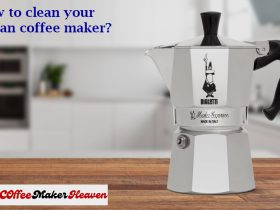
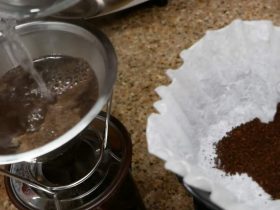
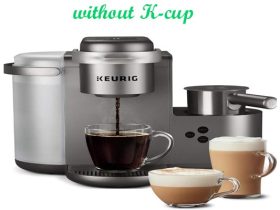
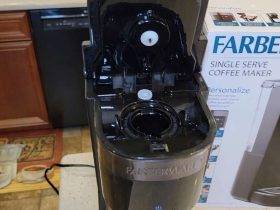



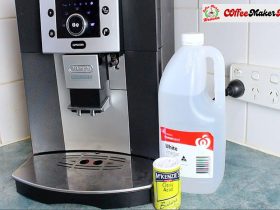

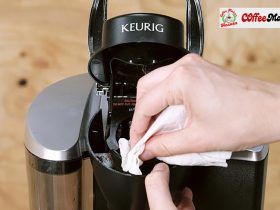
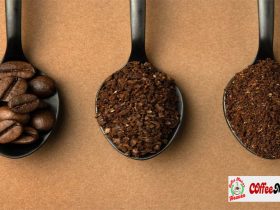
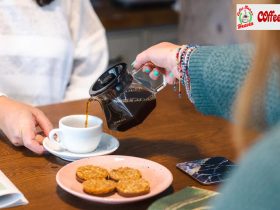
Leave a Reply